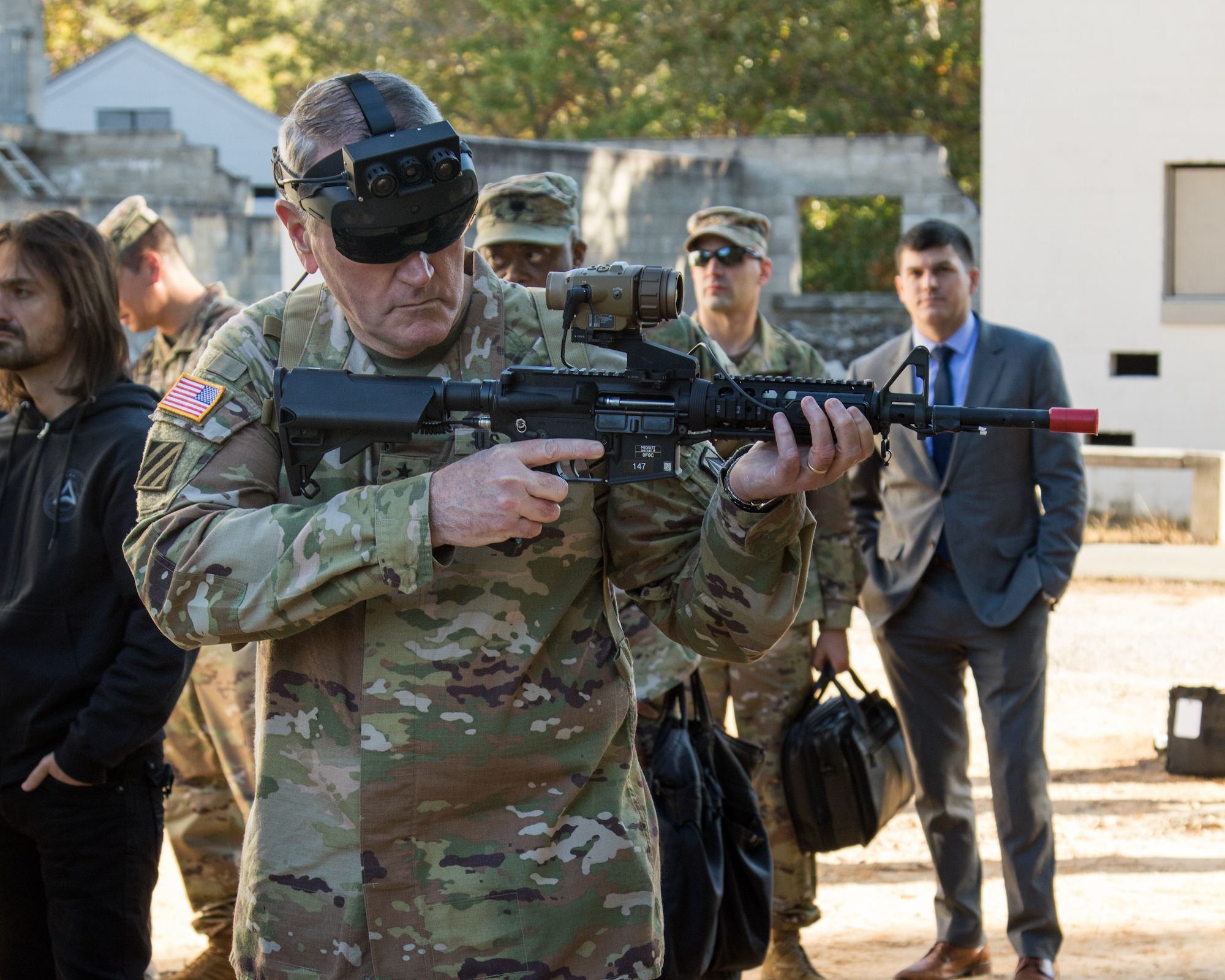

With cameras and screens promising superhuman vision, the Army’s augmented reality goggles were supposed to offer an edge in combat. Instead, a new set of delays in testing, combined with an audit from the Army’s Inspector General, could put the whole program in doubt.
The IVAS, or Integrated Visual Augmentation System, is a headset adapted from the Microsoft HoloLens. By integrating processing power, cameras, and a heads-up display, the idea is that any soldier with a headset can perceive more of the world around them. It is a tremendous promise: that high-tech goggles can let soldiers not just see the battlefield better, but see more of it.
It is, at least at present, too good to be true. As Janes first reported, on October 4 “the Pentagon’s inspector general notified the army that it was launching a ‘subject audit’ into its Integrated Visual Augmentation System (IVAS)” to see if the system the Army was procuring and testing actually met its stated needs.
On October 18, two of the offices in the Army responsible for acquiring the IVAS system acknowledged the problem, and announced that testing was delayed by six months, from the end of 2021 to May 2022.
[Related: See what combat could look like through the Army’s futuristic night vision goggles]
“Developers used the Microsoft HoloLens to build a system capable of rapid target acquisition, navigation, target marking and a host of other features, including a field of view nearly twice as wide as those offered by current systems,” wrote senior Army official Karen Saunders and General John Murray of Army Futures Command, in the statement announcing the delay.
The specific problem was that the IVAS goggles offered too wide a field of vision, and suffered for it.
“At 80 degrees, IVAS pushed the boundaries of waveguide technology capabilities, and the field of view began to lose resolution,” Saunders and Murray continued. “By making minor reductions, developers are finding greater quality and clearer visibility.”
In the world of commercial tech and software, this is fairly routine. A product ships in an early form, and regular use, feedback, and data collection in theory lead to better future design. Software updates, a routine part of consumer tech, are a way to fix errors after-the-fact, resulting in a more complete product after use.
It is a method at odds with the typical rigor of military acquisition, where tech must prove itself as reliable and effective before fielding. This is an understandable hurdle, as the consequences of failed military gear can be life or death. It does mean that, when adapting a commercial tool to military use, such a clash was almost inevitable.
Part of the selling point of IVAS was specifically that wider field of vision. While 80 degrees is still smaller than the 120 degrees of vision people naturally have, it was a great deal more than the typical 40 degree field of night vision goggles. That extra margin of sight can be counterproductive if the process of stretching to fit causes a loss of resolution, as reportedly happened with the IVAS.
[Related: These augmented-reality goggles let soldiers see through vehicle walls]
Every extra degree salvaged gets the device closer to its core concept, which is augmented sight as a boon and not a limitation. It’s a delicate balance to strike, because this is a headset placed between the wearer and the world, and distorted or incomplete information would make it worse than not being worn at all.
The Army especially wants IVAS to work as intended, because it’s the centerpiece for a system of networked warfare, where new useful information is shared to soldiers in a way they can immediately act upon. It’s one thing to be told a target is ahead, another to have that target placed onto a heads-up display, and yet another to have the display image actually mislead about the location of the target.
By investigating the limitation, and by postponing the tests, the Army is following best practices for ensuring the delivered equipment functions as promised. It is a slow process compared to the world of consumer tech, but it’s moving at a fairly rapid clip for military acquisitions, even with the delay.
